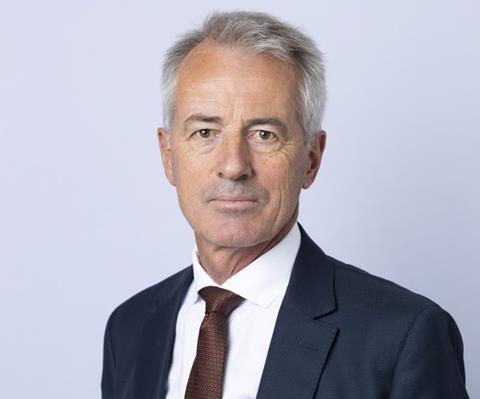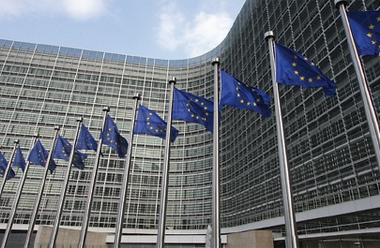CCP clearing is highly concentrated in a few financial centres around the globe, with the City of London playing a very important role
A further reform of the rules on market infrastructures under the European Market Infrastructures Regulation (EMIR) regulation aims to bring more clearing (from the UK) to the EU, but does again not yet integrate supervision.
The proposal addresses the recent upheaval in energy markets by including energy companies in the scope of the proposal. It wants to simplify approval of new products, make it easier to participate in clearing facilities and facilitate equivalence assessments.
This third set of amendments to the 2014 EMIR was proposed by the European Commission on 7 December 2022 as part of a new capital markets union (CMU) package, comprising also a new listing act and a start of insolvency harmonisation. This will probably be the last set of harmonisation in the CMU domain (under the Ursula von der Leyen Commission), apart from the retail investment strategy, which is expected in the course of the first half.
Bringing clearing on-shore is the most important objective of this proposal, already announced when the EU Commission announced the extension of the equivalence for central counterparty clearing houses (CCPs) with the UK.
Today CCP clearing is highly concentrated in a few financial centres around the globe, with the City of London playing a very important role. 91% of all euro-denominated interest-rate swaps trades were cleared in the UK in the first half of 2021, for example.
This raises financial stability concerns, which in the context of the ‘strategic autonomy’ ambition of the EU, need to be tackled. In case of stress in markets, margins calls or haircuts on governments debt, posted as collateral, could affect market volatility.
Although EMIR 2.2 brought a structure in place for EU supervision (by the European Securities and Markets Authority, ESMA) of third country systemic CCPs, the EU Commission wants more of the business to move to the continent.
Financial stability risks
Central in the proposal is the doubling of accounts of EU entities with an EU-based CCP to achieve this objective. The EU Commission argues that this will contribute to reduce the financial stability risks posed by excessive exposure to third-country CCPs.
As the EU Commission argues, the cost that the doubling of accounts will entail do not outweigh the benefits in view of better financial stability control. Moreover, and given that many entities already have accounts within the EU, and apart from some initial administrative costs, there will even be benefits (by bringing more critical mass to the EU), and lower costs in the long term.
The problem, however, is that the most important competitors in the derivatives markets (i.e. third-country banks) will not have to double their accounts. Instead, they will stay in the large clearing centres, which will further disadvantage EU banks in these markets.

Another element of the proposal is related to the recent upheaval in the energy markets, the problems raised by the price volatility and the impact on margins calls on market participants. The Commission proposes to extend the list of assets that can be posted as collateral at EU CCPs, and to ease the predictability of obligations of clearing participants. But whether the proposal facilitates the membership of CCPs for non-financial firms, which was part of the problem, is unclear and remains to be seen.
More centralised supervision missing
Other parts of the Commission’s proposal that address the clearing ecosystem, can be described as sweeteners or non-objectionable. This is the simplification of the approval process for CCPS’ new products and services, the ease of the equivalence assessment procedure, and the facilitation of participation in CCPs through the reduction of costs (e.g.insurance companies in their prudential requirement and pension funds as of July 2023 onwards).
The biggest element that is missing, and a contradiction compared to what the proposal aims to achieve, is more centralised supervision for EU-based CCPs.
Bringing more clearing onshore will increase volumes, but as long as supervision remains at national level in the EU, for the 13 EU based CCPs, resilience will not necessarily improve. EMIR 2.2 already subjected third-country CCPs to direct oversight by the European Supervisory Authorities (ESAs), without doing the same for EU-based ones.
This current proposal continues to avoid the matter, indicating that it is sufficient to increase supervisory cooperation, or the ‘spaghetti’ of cooperation between EU and national authorities, and co-ordinate common responses in case of emergency situations, and this for such systemically important entities.
Instead, it would have been better, and consistent, to fully leave supervision with ESMA and build upon the expertise acquired by ESMA’s CCP Supervisory Committee, to avoid unclear supervisory responsibility sharing.
In an effort to take the risk reducing nature of central clearing into account, the proposal does not only amend EMIR 2.2, but also the Undertakings for Collective Investment in Transferable Securities (UCITS) and the Investment Firms directives (IFD), the Capital Requirements (CRR) and the Money Market Funds (MMFs) regulations.
Although these amendments appear to be minor, the co-decision making process in the European Parliament and EU Council for five separate amendments may be expected to be complex.
Bottom line, this is a half-baked proposal. On one hand, it attempts to strengthen the EU’s strategic autonomy in the domain of CCPs, where dependence from the UK is significant. But on the other hand, it avoids the confrontation with the Member States on supervision. If the EU’s aim is to make the European CCP ecosystem more attractive and competitive, then it is time to start breaking some eggs.
Karel Lanoo is CEO of CEPS





























No comments yet